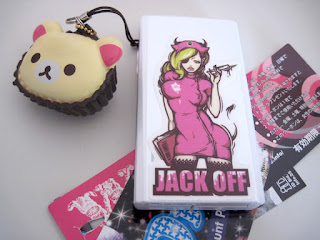Photo courtesy of Meieki Keizai Shimbun, 2010.
The Imperial Rose sits on the fourth floor of a building, just a moment's walk from the hustle and bustle of Nagoya Station. Imagine, entering an elevator like any other, pressing the singular violet button that carries you to the top floor.
The elevator opens, and you find yourself faced with a set of heavy black doors. Roses and ivy curl around the black iron clock, ticking away despite the timeless scene.
The elevator opens, and you find yourself faced with a set of heavy black doors. Roses and ivy curl around the black iron clock, ticking away despite the timeless scene.
It's hard to believe that you're still in Japan, and not a scene from a fairytale.
Like a magic spell at midnight, the cafe comes to life at noon. The lights on the clock ignite like fireflies.
Rap the heavy iron knocker, and the bolt behind the doors is undone. A dashing butler greets you with a bow and a cordial smile... welcome to The Imperial Rose.
Rap the heavy iron knocker, and the bolt behind the doors is undone. A dashing butler greets you with a bow and a cordial smile... welcome to The Imperial Rose.
This butler-kei cafe prides itself on handcrafted sweets, a profound and creative atmosphere, and signature teas arranged by the owner. The workers are all female, dressed in gothic boy style and visual kei fashion. The cafe caters to Gothic Lolita and cosplaying customers, with several special events throughout the year.
The inside of the cafe was all violet, from the chairs to the chandeliers and velvet tablecloths. Ball-jointed dolls sat perched on the counters. There was a bookshelf packed with gothic lolita art books to admire during your stay, and if you'd prefer to watch something, each table had a television with a selection of dvds about tea.
Photo courtesy of Meieki Keizai Shimbun, 2010.
When I went this weekend, we ordered the Deluxe Tea set, which serves two for 2,500 yen. We got our choice of tea, which the butler let us sniff for aroma and flavor before brewing. We went with the house specialty, IR tea, which had a gorgeous rose scent.
We were served with a four-tier dessert tray, with crystals dangling from the sides, butterflies arranged in clotted cream, the cakes adorned with bat-shaped cookies. The top tier was scones with our choice of jam and clotted cream (we opted for blueberry); the second tier was cheesecake and strawberry short cake; the third was a berry tart; and last but not least was a delicate chiffon cake served with cream.
Each guest was served with a different teacup and saucer. The teapot cozies were hand stitched with the cafe name and a lavender rose bud.
On the way out, you can purchase post cards, stickers, second-hand lolita, cosplay and j-rock goods, as well as handmade accessories from LoveReplica.
This was my very first time at a cafe like this! It was like a dream. All of the handmade elements, like the menus and decorations were so impressive and unique. I was so sad that photos were forbidden, because everything was beautiful and ethereal.
It has always been a dream of mine to open my own Lolita cafe someday, and after visiting the Imperial Rose I am even more determined.
It sounds silly, but it's things like this that remind me why I got into lolita, why I still wear it and love it.
















